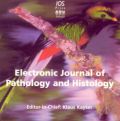Authors: Kayser, Klaus | Kayser, Gian | Zink, Stefan
Article Type:
Research Article
Abstract:
Background: Telepathology is the work of a pathologist at a distance. It is useful to distinguish two applications, namely on-line and off-line telepathology. Several field tests have been shown that this technology can be successfully applied in frozen section services, remote control measurements, expert consultations, training and education. What is to be expected from this technology in the future? Technology and pathology disciplines: Frozen section service is an interactive end-to-end diagnostic discipline
…with contemporary visual and acoustic information transfer. The commercially available systems will probably become integrated into pathology documentation systems, and to be integrated into teaching and training systems. Interdisciplinary connection (for example with radiology or endoscopy) is on the way. These systems will probably remain stationary in contrast to expert consultation and training systems. The trend in expert consultation directs to off-line consultation, mainly by use of the internet. The new generation of cellular phones will provide non-stationary data transfer and will permit a closer integration of expert teleconsultation into the workflow of diagnostic pathology. It will be combined with visual data bases allowing first step diagnosis with integrated image sources. Allocation with other medical fields will construct multi-dimensional image data bases with strict timing in terms of final diagnosis and access to information spread into the internet (electronic publication). Thus, off-line teleconsultation will be one point in a multidimensional telepathology system which can be projected on different scales such as expert consultation, on-the-spot diagnosis, telemeasurements, education, or publication. Teleeducation and training systems will, again, become distributed by the internet and be connected with interactive TV systems which might be located at home or in transportation vehicles (cars, trains, airplanes). Information connection and time schedules: Computer networking is now to be installed between numerous European research centers to be connected by broad band connections. Large university pathology institutions will have access to these lines at reasonable costs in contrast to small institutions which will have to rely on ISDN lines, wireless connections or powerline information transfer. It can be expected that new technologies will increase the gap between large and small institutions giving enormous technical advantages to large institutions. This process has already started in large cities (for example Berlin) although real new pathology applications are still missing. It can be foreseen that within the next five years expert consultation systems will be handled by large institutions to be accessible for diagnostic support by small pathology institutes within Europe. Outlook: Telepathology has already started to become a routine tool in various institutes of pathology. It is no more only a replacement of missing experts or non-available pathologists at locations of surgery. It has already opened a new technology door giving chances for the combination of research, diagnosis, education and publication in pathology, i.e., we will step into a new world of pathology.
Show more
Keywords: telepathology, on-line telepathology, off-line telepathology, wireless information transfer, powerline telecommunication
Citation: Electronic Journal of Pathology and Histology,
vol. 6, no. 3, pp. 03-03, 2000
Price: EUR 27.50





